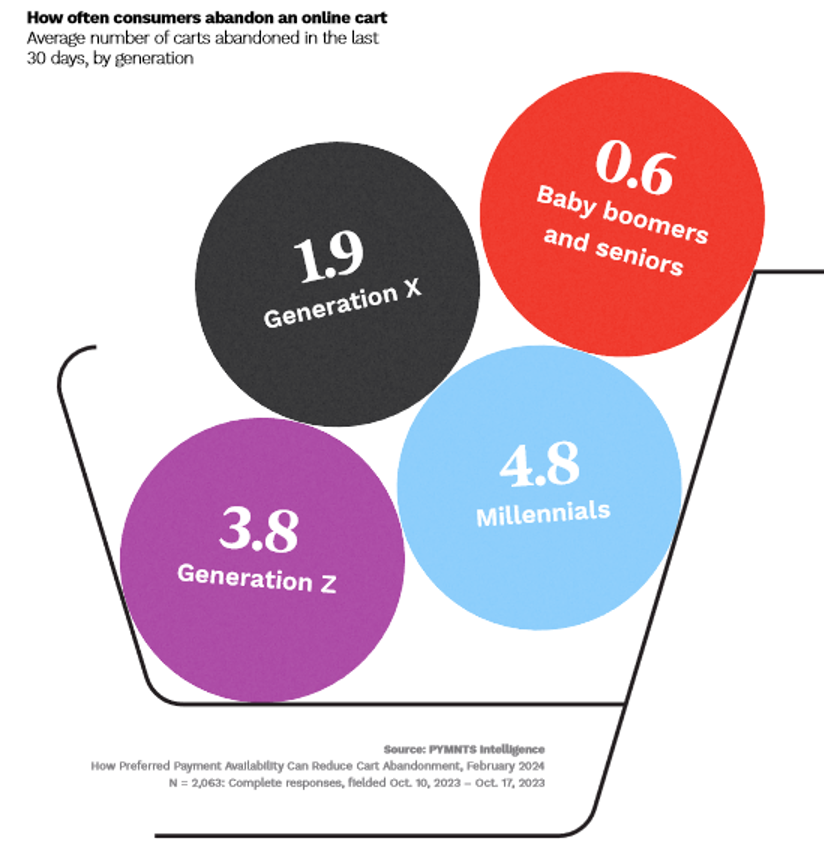Brand Sites Suffer as Consumers Browse but Do Not Buy

Consumers make many choices when shopping, and perhaps no decision is more important than whether to complete a purchase.
But in the world of eCommerce, cart abandonment — where shoppers select items only to walk away before the purchase — can be especially vexing.
As PYMNTS Intelligence found in research for “How Preferred Payment Availability Can Reduce Cart Abandonment,” a collaboration with Adobe, when shopping on brand websites, on average, consumers abandoned their carts eight times a month.

However, the report, which is based on surveys with more than 3,500 consumers, found that cart abandonment tends to follow generational patterns.
Millennials abandon online carts in general most, walking away from an average of five carts over a 30-day period. Gen Z shoppers, who forgo four online buys a month, follow. In contrast, baby boomers and seniors abandon less than one cart over a 30-day stretch. In other words, older online shoppers come to buy, while younger ones come to browse.
This pattern might be linked to the simple fact that, by its very nature, eCommerce — and the abundance of choices it provides — facilitates commitment-free browsing. Younger consumers may simply want to hold items in their carts while they search for better deals.
PYMNTS Intelligence found that the highest rate of cart abandonment is in the clothing and accessories categories, where both millennials and Gen Z shoppers abandoned, on average, two carts a month — five times more than baby boomers and seniors. In contrast, cart abandonment is less common when shopping for essentials such as groceries or big-ticket items such as electronics, home furnishings or appliances. Data shows that, at most, consumers of all ages abandon only one cart a month.
So, what is an eCommerce merchant to do to minimize cart abandonment?
One key takeaway from “How Preferred Payment Availability Can Reduce Cart Abandonment” is to streamline the payment experience wherever possible. Doing so may help reduce a shoppers’ impulse to look elsewhere, as easier payments make buying decisions easier. Not only would providing a frictionless payment experience minimize cart abandonment, but it could also foster all the other connected advantages of a converted sale, including loyalty.

